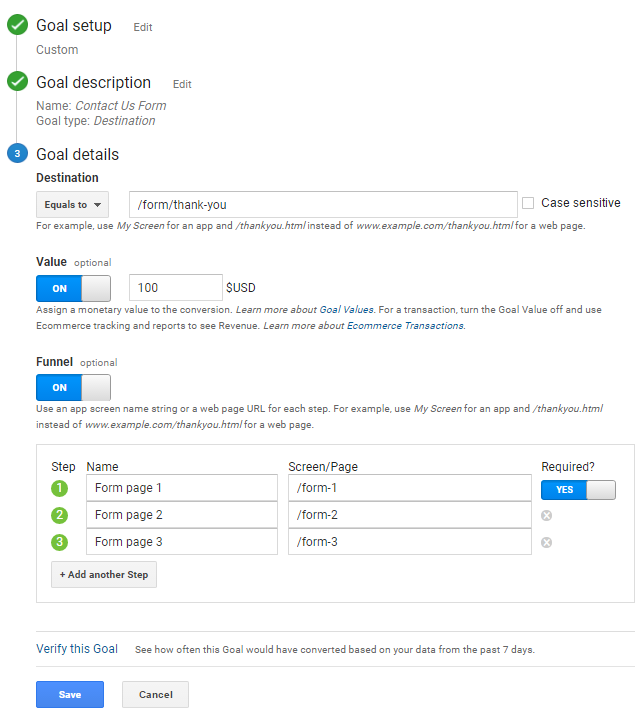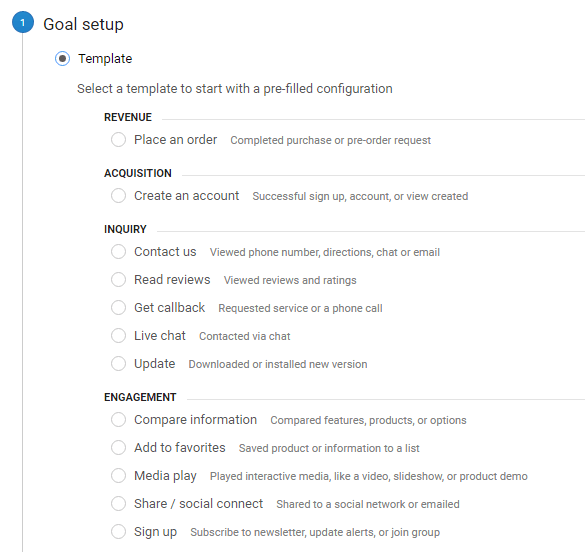What Data Is Google Analytics Goals Unable to Track: Important Info
What Data Is Google Analytics Goals Unable to Track: Important Info
Blog Article
Discover the Limitations of Google Analytics Goals: Revealing the Information Types That Remain Untrackable
As companies increasingly depend on data-driven decision-making, understanding the limitations of devices like Google Analytics comes to be vital. While Google Analytics Goals deal useful insights into individual communications, there exist information types that elude tracking, positioning challenges to a comprehensive understanding of individual actions. These untrackable data kinds elevate concerns concerning the precision and completeness of the analytics information that companies greatly depend upon for their electronic strategies. Interested to uncover the surprise dead spots in your information evaluation process?
Incomplete Individual Journey Tracking
Incomplete customer trip tracking within Google Analytics can impede the ability to precisely analyze individual habits. When the customer trip is not completely tracked, there are gaps in the data that prevent a comprehensive understanding of just how individuals interact with a web site. This absence of understanding can cause missed out on chances for optimization and enhancements to the individual experience.
One typical issue with incomplete user trip monitoring is the lack of ability to see the full path that users take in the past finishing a goal or leaving the site. Without this information, it is testing to recognize where individuals may be experiencing obstacles or friction factors that avoid them from converting. Additionally, insufficient monitoring can obscure the effect of certain marketing initiatives or web site adjustments on individual habits.
To address this limitation, it is crucial to establish up proper tracking systems within Google Analytics to record the whole user journey. This may include establishing occasion monitoring, goal funnels, or making use of tools like Google Tag Supervisor to make certain that no crucial interactions go unrecorded. By obtaining a thorough view of the customer journey, web site owners can make more informed decisions to boost individual engagement and drive conversions.
Acknowledgment Challenges
Browsing with attribution obstacles in Google Analytics calls for a detailed understanding of how various touchpoints contribute to the general conversion procedure. Attribution difficulties emerge from the intricacy of contemporary consumer journeys, where individuals connect with multiple networks prior to transforming. Google Analytics offers different acknowledgment models like very first touch, last touch, and linear, each using a different viewpoint on just how credit rating is assigned to touchpoints along the conversion course. These designs may not always properly mirror the real influence of each touchpoint on the conversion.
One typical attribution challenge is the trouble in associating conversions to the correct resource, particularly in cases where users communicate with numerous channels prior to converting. Furthermore, cross-device tracking presents another acknowledgment obstacle, as customers typically switch in between devices throughout their journey, making it testing to track their interactions effortlessly.
Offline Conversions
Given the difficulties associated with connecting conversions precisely in online networks, the measurement of offline conversions presents a substantial possibility for marketers looking for an extra extensive understanding of their clients' journey. Offline conversions refer to actions that consumers absorb the real world, such as making purchases in brick-and-mortar stores or over the phone, participating in events, or engaging with printed products - what data is google analytics goals unable to track. These conversions are important for organizations that operate both online and offline, as they supply valuable insights into the efficiency of advertising and marketing campaigns across different touchpoints
Tracking offline conversions commonly posed a like it substantial challenge for marketers, as it was testing to link these activities back to details online communications properly. Nonetheless, with advancements in technology, such as the combination of CRM systems, special identifiers, and promo code codes, businesses can now bridge the space between online and offline data to acquire a much more all natural sight of customer habits. By successfully gauging offline conversions, marketers can optimize their approaches, allot sources much more efficiently, and ultimately boost the general client experience.
Cross-Device Monitoring
Cross-device tracking plays a crucial function in understanding the interconnected nature of customers' electronic communications across numerous gadgets. In today's omnichannel globe, where customers perfectly switch over in between desktop computers, smartphones, and tablets, tracking their actions across these tools is crucial for marketers to gain a detailed sight of their customer journey.

Moreover, privacy worries and laws such as GDPR and CCPA have even more challenging cross-device tracking. With users demanding more control over their data and enhanced limitations on monitoring innovations, marketing experts must find privacy-compliant and ingenious means to link user communications throughout gadgets.
Dynamic Material Interaction
Comprehending individual interaction with dynamic content is crucial in enhancing digital advertising this website and marketing methods for improved audience communication. Dynamic material refers to website elements that alter based on customer actions, preferences, or other variables, supplying a tailored experience. Tracking customer interactions with dynamic content poses challenges for standard analytics tools like Google Analytics.
While Google Analytics can track standard interactions like clicks and web page sights, it might have a hard time to capture even more nuanced engagements within dynamic web content. what data is google analytics goals unable to track. Metrics such as time spent on certain vibrant elements, hover actions, or communications within pop-ups are typically not easily measurable utilizing standard tracking approaches. This restriction hinders marketers' capability to completely grasp just how individuals are involving with vibrant material and customize their strategies appropriately

Verdict
To conclude, Google Analytics goals have limitations in tracking incomplete individual trips, associating conversions precisely, catching offline conversions, tracking cross-device interactions, and measuring dynamic content engagement. These constraints highlight the significance of checking out extra monitoring approaches and devices to get a much more thorough understanding of customer habits and conversions beyond what Google Analytics can offer.
While Google Analytics Goals deal beneficial understandings right into individual interactions, there exist data types that elude tracking, posing challenges to an extensive understanding of individual actions.Insufficient individual trip tracking within Google Analytics can hinder the capacity to precisely examine individual behavior. When the customer journey is not fully tracked, there are voids in the data that avoid an extensive understanding of how users engage with a website.One usual concern with incomplete user trip tracking is the lack of ability to see the complete path that customers take previously completing an objective or leaving the site. By gaining a thorough sight of the customer journey, website proprietors can make more enlightened decisions to enhance user involvement and drive conversions.
Report this page